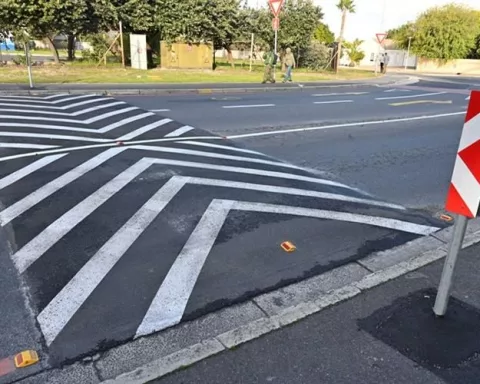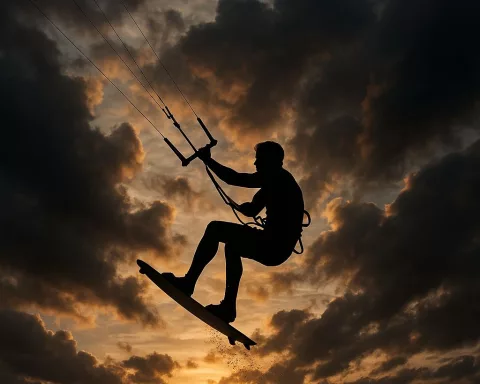Table Mountain National Park (TMNP) is taking strong steps to keep visitors safe while they enjoy its breathtaking views. Following recent concerns about safety, especially after the tragic loss of a young hiker, SANParks teamed up with local police and the Cape Town community to improve security. Thanks to their combined efforts and the use of new technology, crime in the park has dropped significantly. With a focus on community involvement and advanced safety measures, TMNP aims to protect its beautiful wilderness while making sure everyone can explore it safely.
What are the safety measures in place at Table Mountain National Park?
Table Mountain National Park (TMNP) employs various safety measures, including a partnership between SANParks, SAPS, and the City of Cape Town, community involvement, and advanced technology. These initiatives have led to a significant reduction in crime and enhanced security for all visitors, ensuring a safer experience.
The Rising Sun Over Table Mountain
As dawn breaks over Table Mountain National Park (TMNP), its towering peaks and expansive vistas beckon adventurers from across the globe. However, recent tragedies have brought to light growing concerns regarding the safety of this cherished South African landmark. The discovery of the body of Brook Cecilia Cheuvront, a 20-year-old American student who disappeared while hiking Devil’s Peak, has sparked an intense debate about crime and security within the park’s confines, casting a pall over its otherwise stunning landscape.
In response to these concerns, the South African National Parks (SANParks) quickly stepped in to address the situation. Acknowledging the severity of Cheuvront’s death, SANParks shared recent crime statistics to provide a clearer perspective on safety within TMNP. Data reveals a substantial reduction in criminal activities, with incidents falling from 16 and 32 in late 2023 to just six in July 2024 and three in August 2024. JP Louw, a spokesperson for SANParks, emphasized the importance of relying on verified data rather than succumbing to speculative fears that could hinder effective safety measures.
SANParks’ Swift Response
Louw’s comments underscored the necessity of trust in data and the ongoing efforts to maintain a secure environment in TMNP. He asserted that speculation without evidence could create unnecessary panic, thus undermining the robust safety protocols in place. SANParks has not encountered credible claims suggesting their current safety strategies are ineffective, and the statistics appear to support this stance.
The success of safety initiatives within TMNP largely hinges on a collaborative approach involving SANParks, the South African Police Service (SAPS), and the City of Cape Town. This partnership, reinvigorated in 2023, has bolstered security through the sharing of intelligence and resources, resulting in a tangible decrease in crime. This collaboration highlights a broader trend in modern security strategies, where multi-agency cooperation is vital in addressing complex issues.
Community Involvement and Technological Advancements
One of the most notable aspects of the security measures at TMNP is the development of a volunteer-based partnership framework. SANParks aims to engage the community more directly in their safety efforts, cultivating a sense of shared responsibility and collective vigilance. This initiative is reminiscent of historical precedents where community involvement was pivotal in maintaining public safety, such as the neighborhood watch programs that gained traction in the late 20th century.
In addition to fostering community involvement, SANParks is expanding its ranger corps and enhancing its Sea, Air, and Mountain (SEAM) team, which is supported by aerial and K9 units. This multifaceted approach ensures comprehensive surveillance over the park’s diverse landscape. The SEAM team’s operations, bolstered by helicopters and highly trained dogs, represent a sophisticated integration of traditional ranger roles with modern technological advances.
Event Safety and Broader Implications
As TMNP continues to host various events, adherence to safety protocols remains crucial. Louw reiterated the importance of compliance with these protocols, highlighting that the collective efforts of all visitors contribute to the overall safety of the park. This approach aligns with broader trends in event management and public safety, where the responsibility for security is distributed among all participants rather than solely on law enforcement.
Reflecting on the broader implications of these measures, one can appreciate the delicate balance TMNP must maintain. On the one hand, the park seeks to preserve its reputation as a sanctuary for nature enthusiasts and adventurers. On the other hand, it must ensure that it remains a safe environment for all visitors. The strategies employed by SANParks, SAPS, and the City of Cape Town demonstrate a keen awareness of this balance. By leveraging data, encouraging community engagement, and incorporating advanced security measures, they strive to maintain the park’s natural allure while safeguarding its patrons.
A Model for Global Conservation Areas
Beyond the immediate context of TMNP, this approach provides valuable lessons for other natural parks and conservation areas worldwide. The effective use of data, community partnerships, and advanced technology presents a scalable model for enhancing safety in various environments. It serves as a testament to how contemporary strategies can harmonize with the enduring principles of conservation and public enjoyment.
The narrative of TMNP, with its blend of natural beauty and modern challenges, exemplifies the evolving dynamics of public spaces in the 21st century. As the park navigates these complexities, its story remains one of resilience, adaptation, and an unwavering commitment to safety. While the tragedy of Brook Cecilia Cheuvront’s death stands as a somber reminder of the risks inherent in adventure, it also highlights the ongoing efforts to ensure TMNP remains a secure and inviting place for all who seek its wonders.
“`markdown
What safety measures are currently in place at Table Mountain National Park?
Table Mountain National Park (TMNP) has implemented a range of safety measures including a partnership between SANParks, the South African Police Service (SAPS), and the City of Cape Town. This collaboration, along with community involvement and advanced technology, has led to a significant reduction in crime and enhanced security for visitors.
How has crime changed in Table Mountain National Park recently?
Recent statistics indicate a marked decrease in criminal activities within TMNP. Incidents dropped from 16 and 32 in late 2023 to six in July 2024 and three in August 2024. This positive trend is attributed to the concerted efforts of SANParks, local police, and community engagement.
What role does community involvement play in safety at TMNP?
Community involvement is crucial to the safety measures at TMNP. SANParks has developed a volunteer-based partnership framework that encourages local participation in safety initiatives. This collective vigilance fosters a shared sense of responsibility among park visitors and residents, enhancing overall security.
What technological advancements have been integrated into TMNP’s safety efforts?
TMNP has expanded its ranger corps and enhanced its Sea, Air, and Mountain (SEAM) team, supported by aerial operations and K9 units. These advancements allow for comprehensive surveillance of the park’s diverse landscape, ensuring the safety of all who visit.
How does TMNP ensure safety during events?
During events, TMNP emphasizes the importance of adhering to safety protocols. The park encourages all visitors to participate in maintaining a secure environment, highlighting that safety is a collective responsibility shared between attendees and law enforcement.
What broader implications do TMNP’s safety measures have for other parks?
The safety strategies employed at TMNP provide valuable lessons for other natural parks and conservation areas worldwide. The model showcases how effective data use, community partnerships, and technological advancements can enhance safety while preserving the natural environment and visitor enjoyment.
“`












